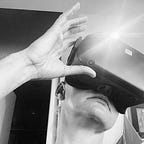Augmented Reality and the Death of the Billboard
If you find yourself with some spare time and want an odd challenge, try counting how many mass-consumer ads you see every day. Exclude the micro-targeted online ads that seem to defy logic (Amazon: just because I searched for garbage cans doesn’t mean I want to only buy garbage cans from here on out) and focus on the billboards and subway posters and ads on the sides of long defunct telephone boxes. The numbers start to mount quickly. Now, think of how many made an impression. Sure, there might have been one reminding you that a favorite TV show is coming back, or a new product from a brand you like is in stores — but the vast majority were just wasted space, visual pollution in an already crowded landscape.
For years we’ve lived with this because no other alternatives existed. But augmented reality now has the power to take all those online recommendations into the real world, and radically change the way we consume information and design cities. Imagine Times Square without the pulsing, glowing neon orgy of branding and consumption. Visualize a world with white space, nature, and public art, instead of ads for things you probably don’t want or need.
This transition will start on our phones and then explode as we shift to the AR glasses predicted to reach consumers in a few years. The way it works is pretty simple — as you use AR to navigate through your day, you’ll be served contextual, relevant, interactive AR experiences customized just for you. When you pass a store window, for instance, you’ll see mannequins that reflect your body type, price range, and style profile — so if you’re a thirtysomething professional woman, like me, you’ll see one set out of outfits, and the twenty year old club kid will see another.
Ditto for food products and restaurant recommendations. I haven’t eaten fast food in years and I’m likely never to again, unless I find myself trapped in an airport and starving. So McDonalds is wasting money every time they advertise to me, because I’m a lost cause. But there are plenty of other food brands I love and would be happy to hear about and consume, and they’ll have more of a voice in the new and scaleable world of AR.
When everyone is being served content they’re likely to respond to, ROI will be exponentially higher and consumers will be much more engaged. AR content already has an average dwell time of 75 seconds and much higher retention rates, so users are likely to remember what they’ve seen and act accordingly.
Beyond that, think of all the public space that will be freed up. Blank space will be made available as a spot to simply rest your eyes and take a break. There will be room for art and commentary and trees and flowers, places where people can relax and meditate and learn. We’re still a ways out from this new reality, but advertisers need to start preparing, lest they get left behind when the shift happens.
